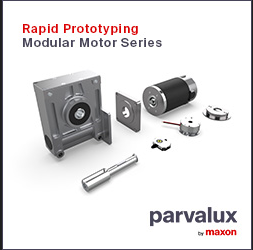Understanding End-to-End Configuration: A Primer
Most modern manufacturers today are grappling with a variety of different systems that aren’t always connected, particularly when it comes to the systems managing product, sales and configuration data. This fragmentation of information and systems doesn’t just create inefficiencies and inconsistencies; it can also limit innovation.
End-to-end configuration offers a strategic solution for unifying data, improving collaboration across departments, and enabling scalable, service-ready product operations.
Drawbacks of the current manufacturing landscape
Today, most discrete manufacturers have disparate, disconnected systems that define various master data sets. This includes everything from enterprise resource planning (ERP), customer relationship management (CRM), product lifecycle management (PLM), sales tools and more. A large company could be operating with as many as 7-10 specialized systems that all need to interact seamlessly.
All of these need to not only “talk” to one another, but they need to be able to share their information with all the different stakeholders. Data from these systems needs to be consolidated to outline the full product offering. This is much easier said than done, and many organizations wind up with a fragmented landscape with different information living in different systems.
This mishmash can result in misaligned data or rule and data misalignment, which can lead to incorrect bills of materials (BOMs), pricing errors and customer dissatisfaction. It can also lead to inconsistent rules, poor user journeys and fragmented experiences with multiple user interfaces.
On the macro level, these challenges can slow time to market or, worse, allow for rushed or flawed releases. When a global event occurs that impacts the availability of products or parts, organizations need to be able to pivot quickly. But without a single-pane-of-glass view, this can wreak havoc.
A need for end-to-end configuration
Another factor affecting the manufacturing sector is that many organizations are also moving away from static product releases to service models. All these factors create a higher demand for a new configuration approach that can support product changes over time and ensure consistent information shared across various functions and stakeholders.
Enter end-to-end configuration, a holistic configuration framework that enables consistent, real-time, cross-system product configuration from engineering to sales to after-sales. This can enable:
- Data harmonization across silos,
- Synchronized configuration logic across platforms, and
- Multi-channel access to consistent configuration options (e.g., website, dealer portal, mobile apps).
End-to-end configuration is different from traditional CPQ (Configure, Price, Quote) tools or static configurators in important ways. The latter two typically operate in silos, often in marketing or sales, and depend on predefined rules and product data snapshots. They aren’t able to keep up with engineering updates, changing customer needs or rapid product changes in real time. Consequently, their use can cause outdated configurations, errors and/or inconsistencies between what’s engineered and what’s sold.
An end-to-end configuration approach, conversely, unites all stages of the product lifecycle, from engineering to after-sales, creating a single source of truth. This framework synchronizes configuration logic and data across systems in real time. This makes it possible to immediately show engineering updates in sales tools, which reduces errors and rework. It ensures that every sales channel is using the same, up-to-date configuration logic, and it unifies variant and option data across enterprise platforms (e.g., PLM, ERP, CRM).
End-to-end configuration removes the silos between systems and functions to speed time to market, ensure consistency and enhance customer experience much more than static or sales-focused configurators ever could.
Four benefits of E2E configuration
End-to-end configuration enables business growth and opportunities in four specific ways:
1. System alignment comprises seamless data exchange and configuration consistency across acquired business units or legacy systems. This is particularly important when it comes to M&A integrations.
2. System consolidation enables manufacturers to migrate disparate tools into a centralized platform to simplify operations.
3. Portfolio optimization and analytics identify rarely sold configurations. They reduce complexity and cost by pruning unused options. For instance, the Tesla website has a configurator that enables buyers to configure their cars, but it only has six paint color options. But if buyers go to the dealership, they can choose from many different colors not available on the website. So, that's a way of slimming your portfolio.
4. Lifecycle-based services keep configurations updated based on product changes (repairs and upgrades). They enable targeted, relevant service offerings.
Consolidate to overcome complexity
The rise of product complexity, service-based models and digital transformation has made old approaches to configuration obsolete. End-to-end configuration enables speed and accuracy, which are critical in an era where manufacturers must deliver customizable, connected products quickly. Companies that invest in unified configuration strategies today will be positioned to compete tomorrow with a faster time to market, better customer experiences and streamlined operations.
Featured Product

